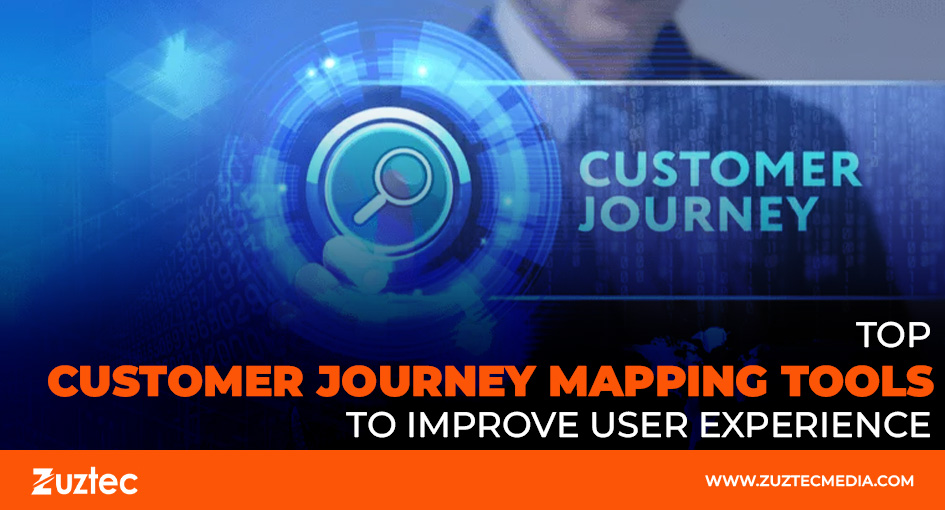
Top Customer Journey Mapping Tools to Improve User Experience
Understanding the customer journey is key to delivering a better experience and increasing business success. An illustration of a consumer’s journey with a brand, from their initial encounter to their last purchase and beyond, is called a customer journey map. It helps businesses understand the needs, behaviors, and emotions of their customers at every stage. To make this process efficient and insightful, many companies use customer journey mapping tools.
These tools are designed to organize customer data, track user behavior, and visualize interactions across various touchpoints. Whether it’s through websites, social media, email campaigns, or customer support, mapping tools offer a structured way to understand and improve customer experiences. They allow businesses to pinpoint pain points, identify opportunities for engagement, and create a more personalized customer path.
Businesses can make data-driven decisions by employing customer journey mapping solutions. Teams from marketing, sales, and customer service can better serve customers by coordinating their efforts with the use of these tools. Additionally, the insights gained from journey maps can improve product development, content creation, and customer retention strategies.
In a world where customer expectations are higher than ever, using the right mapping tool can be a game-changer. This article explores the benefits of customer journey mapping, the best tools available today, and how to choose the right one for your business. Whether you’re a small business or a large enterprise, there’s a mapping tool that can help you create a smoother and more satisfying customer experience.
Top Customer Journey Mapping Tools
- Smaply: Smaply is a dedicated customer journey mapping tool known for its easy-to-use interface and powerful features. It allows users to build detailed maps with persona and stakeholder overviews. Smaply also supports team collaboration and offers export options for presentations.
- Lucidchart: Although not designed solely for journey mapping, Lucidchart is widely used due to its flexible flowchart capabilities. It’s useful for teams already using other Lucid products and supports integrations with apps like Slack, Google Drive, and Atlassian.
- Microsoft Visio: Microsoft Visio is a classic diagramming tool often used in enterprise settings. While it doesn’t have specific journey map templates, it provides complete freedom for customization and fits well in Microsoft-based workflows.
- Canvanizer: Canvanizer offers free and premium templates for creating journey maps and other business canvases. It’s a good choice for startups or small businesses looking for a simple tool to get started with journey mapping.
- Gliffy: Gliffy is another visual diagram tool suitable for mapping customer journeys. Its user-friendly interface and drag-and-drop features make it easy for beginners to build maps quickly.
- InMoment: The InMoment (formerly Wootric) tool focuses on experience data and includes customer journey analytics. InMoment helps brands improve customer satisfaction by identifying key moments that affect loyalty.
Why Customer Journey Mapping Matters
Customer journey mapping is more than just a trend; it’s a critical part of understanding user behavior. When a business visualizes how a customer moves from awareness to purchase, it reveals the highs and lows of the customer experience. This understanding can help reduce friction in the buying process and lead to higher conversion rates.
Businesses that use journey maps are better equipped to identify gaps in service, unnecessary steps, or points where customers lose interest. It can also show what content or actions push a customer to complete a purchase. This kind of clarity makes it easier for teams to work together toward a shared goal—customer satisfaction.
Key Features of Customer Journey Mapping Tools
Not all journey mapping tools are the same, but most include a few essential features. These features help companies analyze and act on customer insights efficiently:
- Visual Mapping Interface: Tools typically offer drag-and-drop builders or templates that make it easy to create maps without design skills.
- Multi-Channel Tracking: Users can track customer behavior across multiple platforms, including websites, mobile apps, and email.
- Customer Persona Integration: Many tools allow you to create and attach personas to journey stages for deeper insights.
- Real-Time Data Analytics: Some platforms integrate with CRMs or analytics tools to pull real-time data into the map.
- Collaboration Tools: Teams can leave notes, assign tasks, and share updates directly within the mapping software.
Significantly, customer journey mapping tools are essential for businesses that want to put their customers first. By visualizing and analyzing every step of the customer experience, companies can make smarter decisions, reduce pain points, and create more value for users. With the right tool, even complex journeys can be mapped clearly and managed effectively. Whether you’re looking for simplicity or advanced analytics, there’s a journey mapping tool to suit your needs. Embracing this approach helps build long-term customer relationships and gives your business a competitive edge in today’s experience-driven market.

